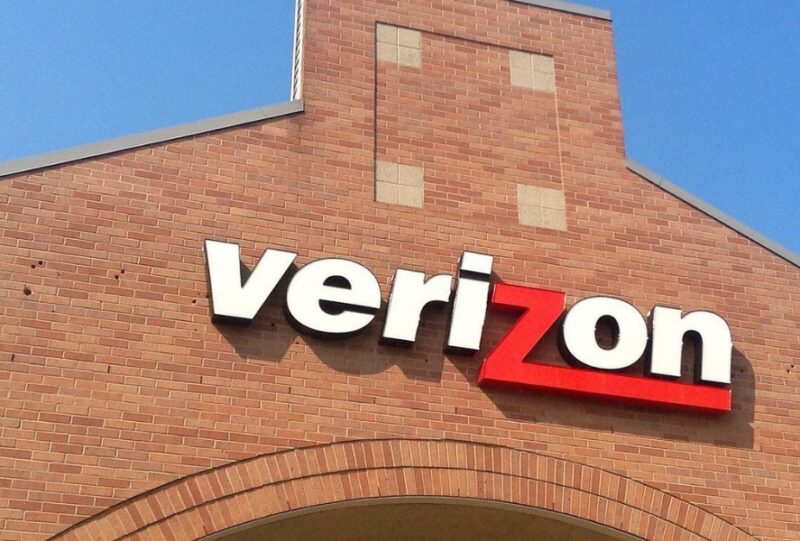Verizon is partnering with Intel to leverage AI in 5G network build-out. The partnership will allow for the use of AI to optimize the performance of networks and provide customers with a better experience.
5G will be the next generation of wireless technology that promises to deliver faster speeds and better coverage. Verizon is using AI in its build-out of the new network infrastructure.
Verizon Communications Inc. is using artificial intelligence models to help position thousands of 5G wireless transmitters in the best possible locations.
The firm will start a multibillion-dollar deployment of midband spectrum later this year, which will extend coverage of its current ultra wideband 5G wireless service.
The goal is to maximize coverage with the fewest amount of transmitters possible, according to Shankar Arumugavelu, Verizon’s senior vice president and global chief information officer.
“When we build up these networks, it takes a lot of money,” he added. “We need to be extremely careful about how we invest our money,” says the CEO.
Verizon Communications’ worldwide chief information officer, Shankar Arumugavelu.
The models, which were created by in-house data scientists and other workers, take into account a variety of factors that may affect the intensity of 5G signals, such as buildings, bridges, topography, the transmitter’s location, and neighboring transmitters.
Analysts have stated that Verizon, along with competitors AT&T Inc. and T-Mobile US Inc., is rushing to deliver countrywide 5G service, a years-long endeavor delayed by a shortage of available airwaves for rapid transmission and extended signal ranges, as well as the deployment of new network equipment.
Verizon, the biggest U.S. carrier, started using AI models in 2018 to figure out where the ideal places to put transmitters for its ultra wideband spectrum, and it’s doing it again for its midband spectrum, which is considered the sweet spot in terms of range and speed. According to Verizon, the firm aims to reach 100 million people with midband spectrum by March 2024.
“We wouldn’t be able to accomplish this without AI. Mr. Arumugavelu said, “Period.”
Verizon won more than half of the midband spectrum in a US federal airwaves auction earlier this year.
According to the Wall Street Journal, the carrier would pay more than $50 billion for the airwaves and associated costs, with a total of $10 billion in capital investments planned over the next three years to extend its midband range.
Subscribe to our newsletter
CIO Journal | WSJ
The CIO Journal team provides daily thoughts and news on corporate technology in the Morning Download.
AI is also being used by other carriers in their 5G ambitions.
According to Grant Castle, vice president of device engineering and technology labs at T-Mobile, which is also launching its midband 5G network, AI models were used to assist engineers prioritize the sites for upgrading its 4G gear to 5G.
Small cell 5G transmitters, also known as antennas, are the size of a backpack and are mounted on vertical structures such as utility poles or buildings.
Mr. Arumugavelu said that Verizon’s AI system can point to the best such vantage points by evaluating different variables inside particular ZIP Codes and how effectively the signal might reach the region. The models can evaluate geographical and topographical elements—bridges, trees, and building heights surrounding particular junctions, for example—and identify the most feasible location for a 5G transmitter using computer vision technology, he said.
According to him, the technology may also suggest the optimum antenna placement so that the signal covers the whole region without interfering with other antennas nearby.
The deployment of midband 5G spectrum is worth billions of dollars, which is why Verizon is depending on AI, according to Sid Nag, vice president of research for cloud and edge computing at Gartner Inc.
“They have to be extremely exact and clinical in identifying the locations where the nodes will be placed,” he said.
According to Mr. Nag, businesses are likely to embrace 5G quicker than consumers, owing to the technology’s potential to allow connection for drones, autonomous cars, and remote healthcare.
Verizon and other carriers are also focusing on ensuring that 5G nodes are placed in the best possible locations because they want their consumers to be as happy as possible with the service, he added.
“Businesses are clamoring to utilize 5G,” he added.
Sara Castellanos can be reached at sara.castellanos@wsj.com.
Dow Jones & Company, Inc. All Rights Reserved. Copyright 2024 Dow Jones & Company, Inc. 87990cbe856818d5eddac44c7b1cdeb8



